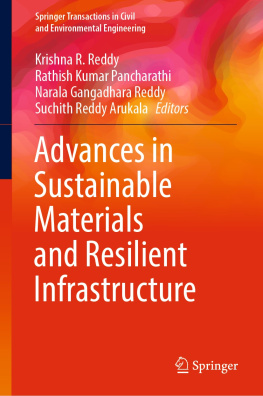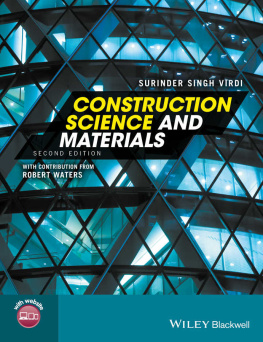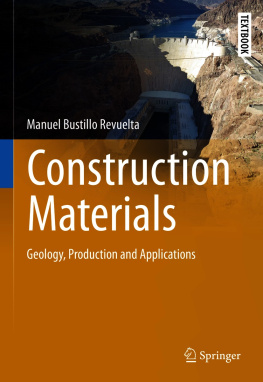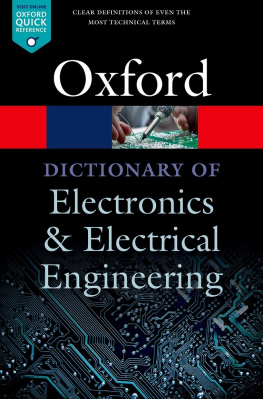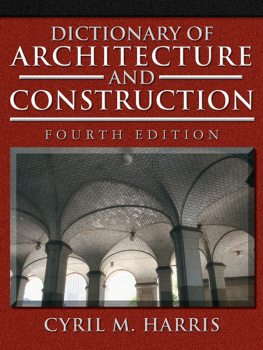While most e-readers can display special characters (such as and ), many cannot search for words containing them, unless the special characters themselves are typed into the search box. If you are unable to type these characters, please browse for your term using the .
OXFORD QUICK REFERENCE
A Dictionary of
Construction, Surveying, and Civil Engineering
Professor Christopher Gorse is Director of the Leeds Sustainability Institute at Leeds Beckett University, where he holds a Chair in Construction and Project Management. He is currently the Chair of the Association of Researchers in Construction Management (ARCOM), Chair of the International Conference for Sustainable Ecological Engineering Design for Society (SEEDS), and a founding member of the Building Performance Network. Chris is a Chartered Builder and Engineering Professors Council Member, holding Principal Investigator positions for major construction, environment, and energy research projects. Chris has written extensively on buildings, construction law, education, management, energy efficiency, digital innovation, and sustainability.
Dr David Johnston is a Professor of Building Performance Evaluation within Leeds Sustainability Institute. He has over twenty five years experience of applied and theoretical research and consultancy in low-carbon housing and is a leading expert in coheating testing and building performance evaluation. He has led and managed numerous field trial projects in both new and existing dwellings, involving detailed in-use monitoring of energy consumption, the analysis of occupant behaviour, and detailed evaluations of the fabric and services performance of domestic buildings. He is an expert member of the British Standards Institution B/540/9 and CEN Technical Committee 89 Working Group 13. He is also the co-author of numerous technical reports and peer-reviewed publications.
Dr Martin Pritchard (BEng Hons, PGCHE, APDRAS, PhD, SFHEA, CEng FICE) is a Reader in Civil Engineering at Leeds Beckett University. He is a civil engineer and has conducted extensive international work on water purification systems and developed sustainable approaches to infrastructure works in developing countries. He also has a particular interest in geotechnics and computer modelling.

For recommended web links for this title, visit www.oxfordreference.com/page/constr when you see this sign.

Great Clarendon Street, Oxford, OX2 6DP, United Kingdom
Oxford University Press is a department of the University of Oxford. It furthers the Universitys objective of excellence in research, scholarship, and education by publishing worldwide. Oxford is a registered trade mark of Oxford University Press in the UK and in certain other countries
Oxford University Press 2012, 2020
The moral rights of the authors have been asserted
First edition 2012
Second edition 2020
Impression: 1
All rights reserved. No part of this publication may be reproduced, stored in a retrieval system, or transmitted, in any form or by any means, without the prior permission in writing of Oxford University Press, or as expressly permitted by law, by licence or under terms agreed with the appropriate reprographics rights organization. Enquiries concerning reproduction outside the scope of the above should be sent to the Rights Department, Oxford University Press, at the address above
You must not circulate this work in any other form and you must impose this same condition on any acquirer
Published in the United States of America by Oxford University Press
198 Madison Avenue, New York, NY 10016, United States of America
British Library Cataloguing in Publication Data
Data available
Library of Congress Control Number: 2019945685
ISBN 9780198832485
ebook ISBN 9780192568632
Printed and bound in Great Britain by Clays Ltd, Elcograf S.p.A.
Links to third party websites are provided by Oxford in good faith and for information only. Oxford disclaims any responsibility for the materials contained in any third party website referenced in this work.
Contents
This dictionary aims to provide a comprehensive and up-to-date reference of construction, surveying, and civil engineering terms within one publication. The entries address the needs of those studying on built environment courses or engaged in professional practice as well as providing much useful information for those with a general interest in architecture or construction. Builders, trade suppliers, and contractors will find the dictionary a useful desktop manual that can be easily and quickly used to check unfamiliar terminology.
Due to the size and nature of the industry, it is difficult for even the most knowledgeable professionals to stay abreast of emerging issues and retain an encyclopedia of construction terms at the front of their mind. In such cases, the book acts as a reminder, giving reassurance of meanings and confidence in communication. Built environment professionals, including architects, building surveyors, building services engineers, construction managers, civil engineers, electrical engineers, facilities managers, mechanical engineers, and quantity surveyors should find the dictionary useful. It offers a quick and easy guide to terms and information that underpin the environment in which we live, both built and natural. In covering these terms, the authors have delved into the areas of building physics and science, and their application to design, structures, materials, and practices that inform construction and engineering. Issues associated with geology, geography, climate, and the natural environment within which buildings and structures are accommodated are also covered. The policy and legal frameworks that provide governance and procedure to the built environment are included, as well as the issues related to the professional organizations that hold influential positions within the industry.
The importance of the sustainability agenda and the related fields of building, engineering, and surveying mean that more people are taking an interest in construction and need to familiarize themselves quickly with the language and terminology used. The dictionary offers a good point of reference for those operating within the field and those just interested in learning more about the built environment and engineering. As a major consumer of the worlds natural resources, the built environment and the impact that it has on the environment are high on the government agenda, with all policymakers ensuring that it is given due consideration. It is expected that the book, terms, and references will continue to grow and be in greater demand as the degree of importance associated with the built environment increases.



